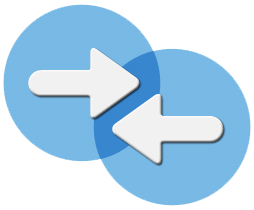 Many businesses are dependent on AdWords for leads, but if you ask them for specifics about their return on investment, or ROI, things can get a bit fuzzy. Clarity comes from identifying and attributing values to the stages of your sales funnel, as described below.
Many businesses are dependent on AdWords for leads, but if you ask them for specifics about their return on investment, or ROI, things can get a bit fuzzy. Clarity comes from identifying and attributing values to the stages of your sales funnel, as described below.
There are many business uses of AdWords: to raise awareness, to reconnect with a past customer, to push direct sales, or to generate leads. The purpose of this particular post, however, is to broadly outline how to determine whether a specific AdWords campaign is directly linked to a positive ROI in terms of dollars spent vs. profits received.
Should AdWords Campaigns Always Have a Positive ROI?
It is important to note that there are entirely legitimate reasons to not have a positive ROI in AdWords in terms of dollars and the high-level model presented below. Most campaigns, for example, are likely to start out without clear positive returns, and some types of business models rely on campaigns that are never meant to generate revenue using this specific framework.
If you’re looking at building an email subscriber list, that’s not “real” money changing hands per se, but it is of value to your business, and can certainly be a factor in your long-term ROI. Regardless of your initial revenue impact, you can gain a wealth of information about what products, services, content, messaging, and special offers resonate with your customers through careful analysis of your AdWords campaigns.
Although it can sometimes take months to prove a positive ROI using our equation, there are many other factors that can make the campaign worthwhile still. If your AdWords model is built around generating sales transactions, then the model presented below should be helpful in setting bid amounts for your campaigns and thinking about your general approach.
The Road to AdWords Profitability
To identify your AdWords ROI (and get many a restful night’s sleep), it’s critical to first consider your AdWords campaigns in the context of actual clicks to your site and the resulting sales.
I always run through the same few threshold questions with clients, listed below. We might have to make conservative educated guesses at the outset, but as we receive more data we can fine tune the formula and get even more clarity on their AdWords ROI.
- What service(s) or product(s) do you sell, and what is your profit margin on each? If you sell widgets for $100 and your profit margin is $20, that tells me as long as you spend less than $20 marketing that widget you can turn a profit.
- How many paid AdWords clicks does it take on average to generate a lead for your product or service? A lead might be a click-to-call from your ad, or a request for an estimate through your site. Not every clickthrough to your site becomes a lead of course, but of those clicks, how many do? Let’s say out of 20 clicks, 3 become a lead. Exciting!
- Of those 3 leads, how many convert into actual sales (that earn you at least $20)? Let’s say your website and product are rocking, and you convert 1 out of 3 times, or 33%.
Was the Campaign Worth It?
In the above scenario, so much depends upon how much those 20 clicks cost you. AdWords makes that easy enough to track, and if those 20 clicks cost you $20, you’re breaking even. Less than $20? Then your campaign has a positive ROI, and you can consider increasing your budget and further optimizing your ads and website to maximize profits.
If this sounds a bit obvious, it’s because the difficulty lies in actually tracking those clicks. What good is a thousand clickthroughs if you have no idea what happened once those visitors landed on your site?
Fortunately, Google AdWords includes a useful feature called Conversion Tracking, the subject of our next post in this series: How to Use Google AdWords Conversion Tracking to Identify Your ROI.

